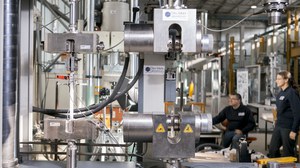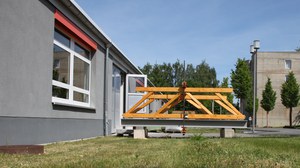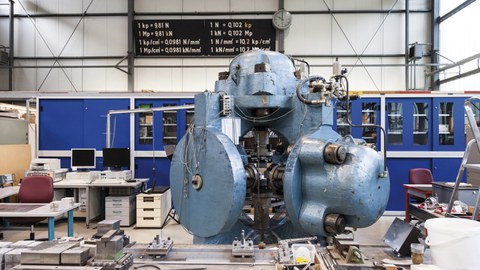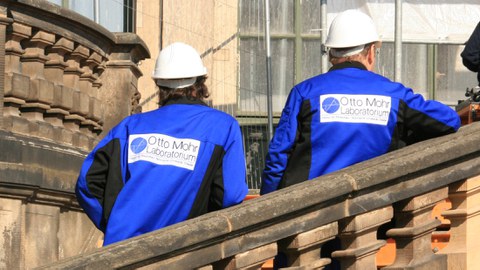The Otto Mohr Laboratory (OML)
The laboratory of the Institute of Concrete Structures at the Technical University is named after the German engineer and structural engineer Christian Otto Mohr. With a modern and extensive equipment, we are specialized in non-destructive examinations and destructive load tests on a variety of materials of structural engineering. We offer our services both internally and for external partners.
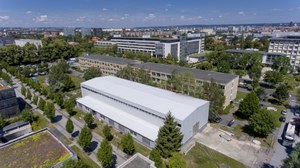 © Iurii Vakaliuk
© Iurii Vakaliuk
The Otto Mohr Laboratory (OML)
is one of the most modern and best equipped experimental facilities in the field of construction in Saxony. Regular tests and calibration of existing testing machines and the constant expansion of the portfolio guarantee the highest standard in testing and experimentation.
The laboratory, as an experimental hall of the constructive engineers at TU Dresden, was established more than 40 years ago. The name ‘Otto Mohr Laboratory‘ exists since nearly 30 years. The OML offers services to all TU Dresden institutions, especially the Institute of Concrete Structures, as well as non-university institutions and companies. The services offered include e.g., destructive and non-destructive examination of building materials or construction components. We have many years of experience in the examination of constructions on behalf of public and private organizations, institutions
and associations, companies, engineers and architects, public and private clients and
construction industry.
The range of service includes:
- common tests like static compression and tensile tests on small samples,
- tests on large-scale components
- tests under special loading conditions like multi-axial, cyclic, long-term or impact loading
As a special field, the Otto Mohr Laboratory carries out expert evaluations based on in-situ tests on, e.g., beams, ceilings, and walls at new, old or historical buildings and bridge structures. Here, we have special knowledge about existing bridges in the context of analysis and implementation of the German recalculation guideline using experimental methods or evaluation concerning the risk of stress corrosion cracking.
More on the subject: Equipment
More on the subject: References

